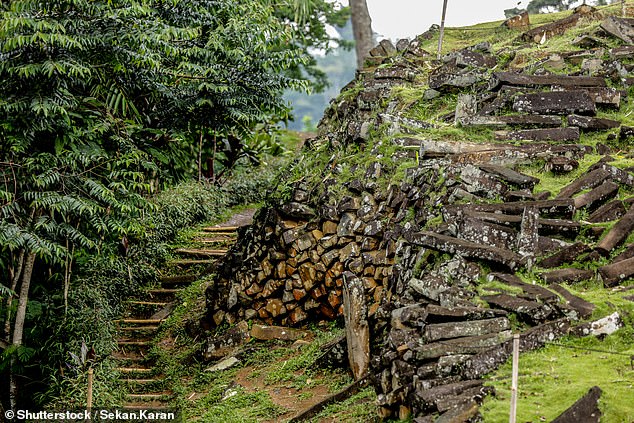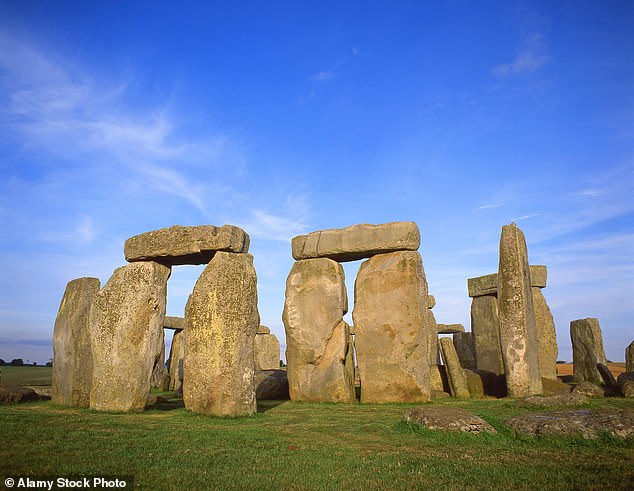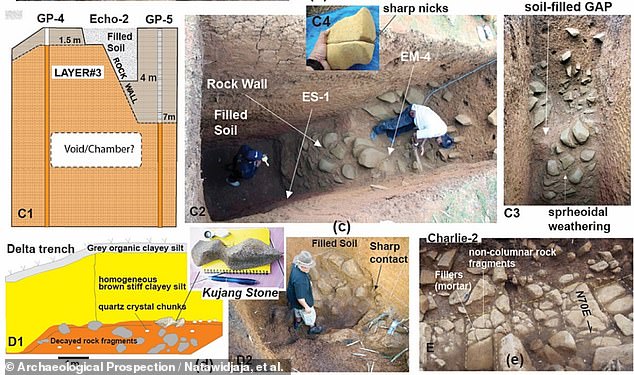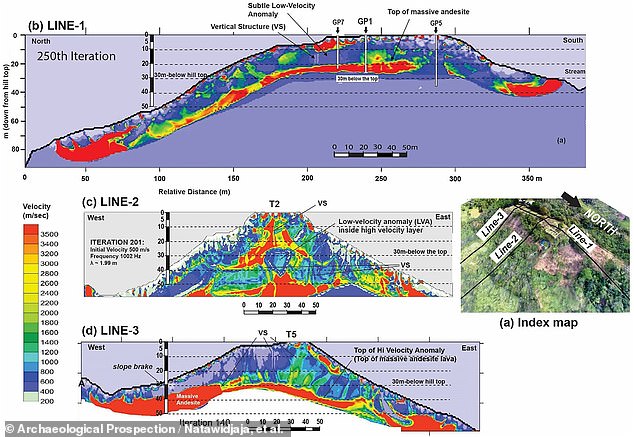Is this Indonesian pyramid REALLY older than Stonehenge? Experts clash over claims Gunung Padang could be more than 25,000 years old
Experts disagree over the claim that an Indonesian pyramid could be more than 25,000 years old.
Gunung Padang, a 30-meter-deep “megalith” submerged in a hill of lava rock, is believed to be the oldest known man-made stone structure of its size, according to a group of archaeologists who have investigated the ancient site.
They claim in a research paper that it is more than twice as old as the current frontrunner, the Göbekli Tepe 'megalith' discovered in Turkey, which is believed to be around 11,000 years old.
However, following its publication last month, other scientists have now disputed their findings, saying the data provide 'no support' for such a conclusion.
Instead, critics argue that the structure was only built about 6,000 to 7,000 years ago, making it just older than Stonehenge, which was reportedly built about 5,000 years ago.
Experts disagree over claim that an Indonesian pyramid (pictured) could be more than 25,000 years old

Gunung Padang, a 30-meter-deep “megalith” submerged in a hill of lava rock, is believed to be the oldest known man-made stone structure of its size, according to a group of archaeologists who have investigated the ancient site.

But critics claim the structure was only built about 6,000 to 7,000 years ago, making it just older than Stonehenge (pictured), which is said to have been built about 5,000 years ago.
Geologist Danny Hilman Natawidjaja from Indonesia's National Research and Innovation Agency led the team of archaeologists, geophysicists and geologists between 2011 and 2015 to learn more about Gunung Padang.
They used ground-penetrating radar to take underground images, core drilling and 'trench' excavation techniques to investigate the very first layers of Gunung Padang – which lay more than 9 stories (30 meters) below the surface.
At the pyramid's core, the team found what they describe as “carefully sculpted” and “massive” lava rock structures made of andesite, a fine-grained type of igneous rock.
This inner chamber, called Unit 4, “probably originated as a natural lava mound… before being sculpted and then architecturally encased during the last ice age,” sometime between 16,000 and 27,000 years ago, they wrote in the journal Archaeological Prospecting. .
“Evidence from Gunung Padang suggests that advanced construction practices existed before agriculture may have been invented,” they claim.
But others have now recognized the magnitude of the claims and agree that while the chamber may be more than 20,000 years old, there is no evidence it was built by humans.
Flint Dibble, an archaeologist at Cardiff University, told the Observer: 'The data presented in this article does not support the ultimate conclusion: that the settlement is extremely old.
“Yet that's what's made headlines.”

Geologist Danny Hilman Natawidjaja of Indonesia's National Research and Innovation Agency led the team of archaeologists, geophysicists and geologists (pictured) between 2011 and 2015 in discovering more about Gunung Padang

They used ground-penetrating radar to take underground images, core drilling and 'trench' excavation techniques, to explore the very first layers of Gunung Padang – which lay more than 9 stories (98 feet or 30 meters) below the surface.
He added: 'If you went to the Palace of Westminster and dropped a core seven meters into the ground and pulled up a soil sample, you could date it at 40,000 years old.'
'But that doesn't mean the Palace of Westminster was built by ancient people 40,000 years ago.
'It just means there is carbon that is 40,000 years old. It is extraordinary that this article has been published.'
The response prompted Natawidjaja, who is also the paper's lead author, to investigate his team's research further.
He said last week: 'The research … responds to third party concerns about the scientific content of our article. We are actively involved in addressing these concerns.”
